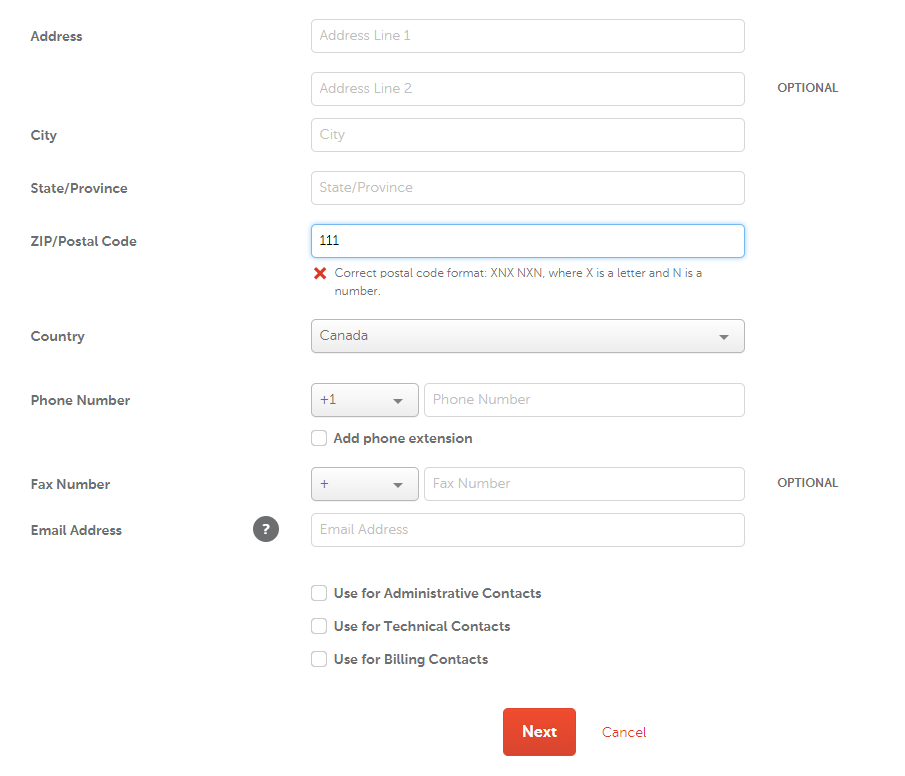Canadian ZIP codes may be tricky and easy to mistype. As a result, when you edit the contact information in your account you may see the warning message as on the picture below in case an incorrect ZIP/Postal code is entered:

The following information concerns the correct ZIP code information for Canada:
A Canadian Postal code is a six-character string that forms part of a postal address in Canada. Like British, Irish and Dutch Postcodes, Canada's Postal codes are alphanumeric, consisting of both letters and digits.
Canadian ZIP codes are in the XNX NXN format. In this format, X is a letter and N is a digit, and there is a space separating the third and fourth characters.
There are some exceptions and additional restrictions for ZIP codes in Canada. Notably, the letters D, F, I, O, Q and U never appear in these Postal codes because of their visual similarity to 0, E, 1, 0, 0, and V, respectively. Additionally, letters W and Z also do not appear as the first letter of a Postal code.
Additional information on the ZIP code format
The first three characters of Canadian Postal codes form a forward sortation area (FSA). A forward sortation area is a geographical region.
- The first letter of an FSA stands for a postal district that specifies a particular territory or province.
- The second digit of an FSA shows if the FSA is rural or urban (0 is a rural region; any other digit is an urban region).
- The third letter of an FSA indicates a rural region/city/section of a metropolitan area.
The three characters of Canadian Postal codes followed by the space represent a Local Delivery Unit (LDU).
A Local Delivery Unit stands for an address or several addresses corresponded to a small town, a large building, a university, a business, a hospital, etc. that receives high volumes of mail regularly.
